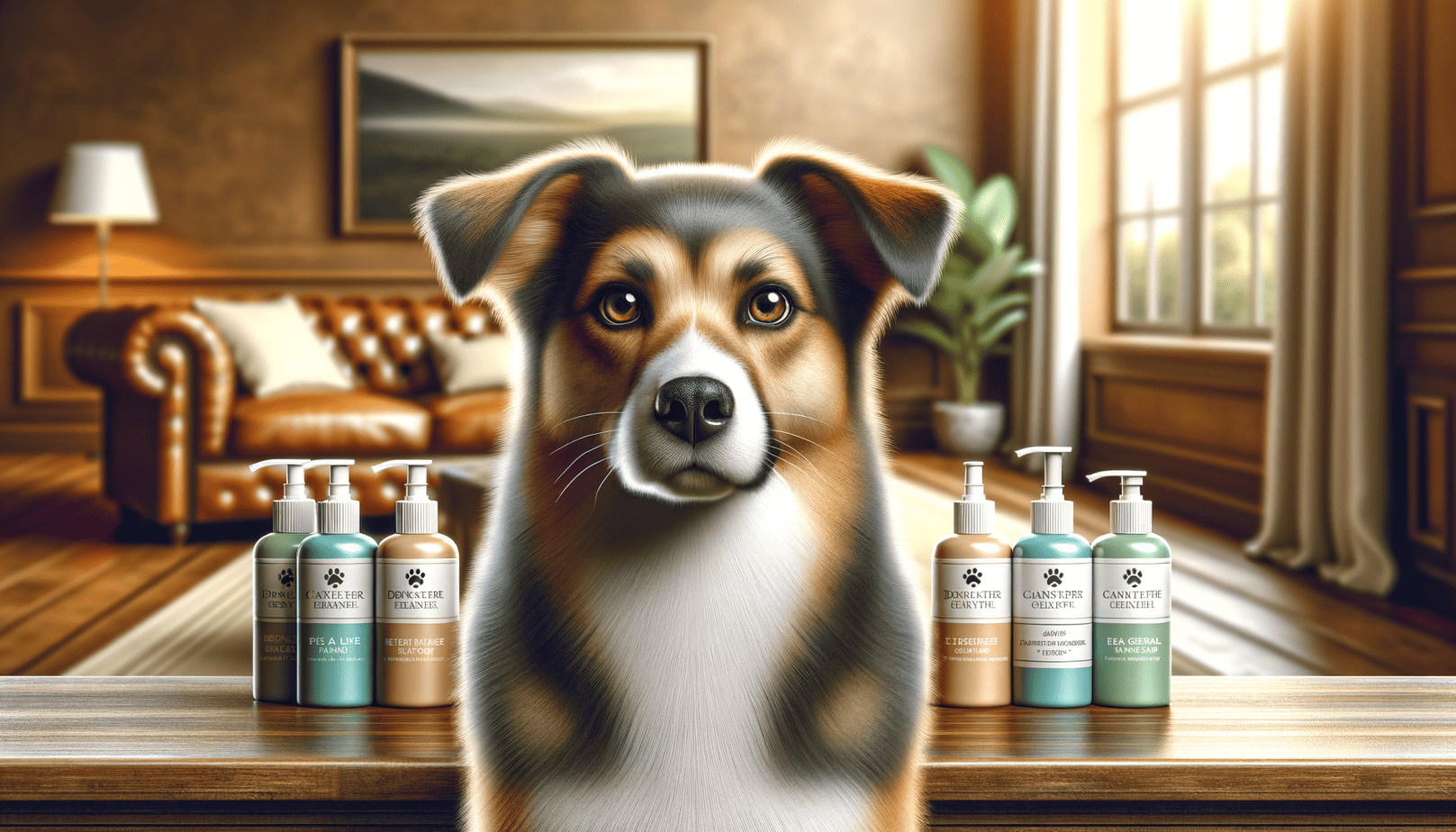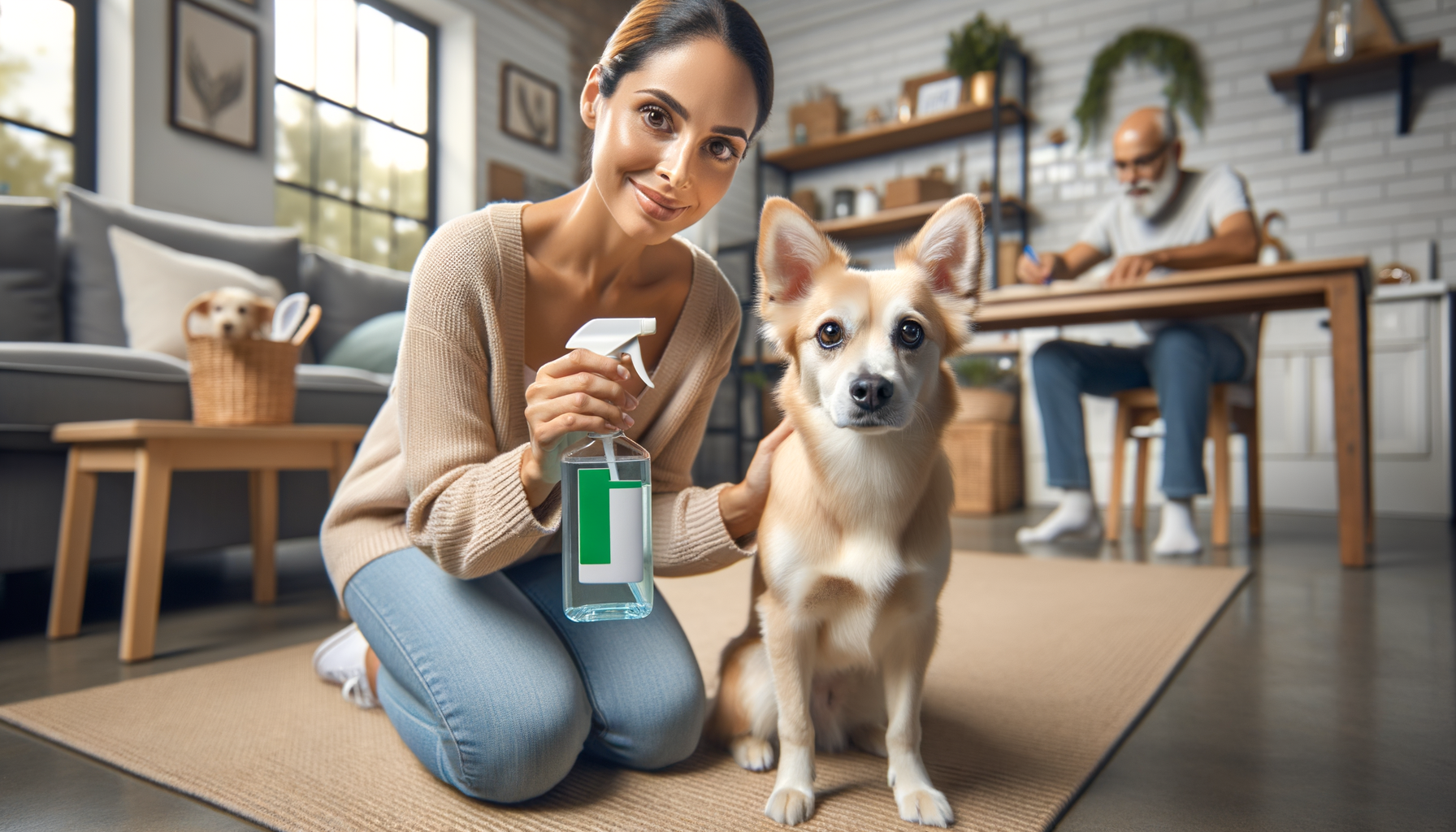Hi there, fellow dog parent! I’m Dr. Candy, your friendly neighborhood holistic veterinarian. If you’re here, chances are your furry friend might be dealing with a pesky ear infection, or you’re just being a proactive pet parent. Either way, I commend you! Understanding the causes of dog ear infections is crucial to preventing them and keeping your pup’s ears healthy. From bacteria and yeast to allergies and moisture, numerous factors can contribute to these uncomfortable conditions. But don’t worry – I’m here to guide you through it all, offering insights into symptoms, treatment, and most importantly, prevention. So, let’s get started and help your loyal companion live their best, healthiest life!

When your furry friend is in discomfort, it can be incredibly distressing. One common issue that can cause your pup pain is a dog ear infection. Recognizing the symptoms early can make a world of difference in their recovery and comfort. Let’s dive into the common signs you should be on the lookout for.
Physical Signs of Dog Ear Infections
There are several physical signs that your dog may have an ear infection. These may include:
- Redness and inflammation: If your dog’s ear appears red, swollen, or warm to the touch, this could indicate an infection.
- Discharge: A clear, yellow, or brownish discharge is a common symptom of an ear infection in dogs.
- Odor: An unpleasant smell emanating from the ear is another telltale sign of an infection.
- Scabs or crustiness: If you notice these around the ear, it could be a result of your dog scratching excessively due to discomfort.
Behavioral Changes in Dogs with Ear Infections
Physical signs are not the only indicators of an ear infection. Your dog’s behavior can also give you clues. A dog with an ear infection might:
- Scratch or paw at their ear: This is often one of the first signs pet parents notice. If your dog is constantly scratching or pawing at their ear, it’s time for a closer inspection.
- Shake their head: A dog with an ear infection will often shake their head or tilt it to one side, trying to alleviate the discomfort or dislodge something from their ear.
- Show signs of pain or discomfort: If your dog yelps or withdraws when you touch their ear, it’s a clear sign that something is wrong.
- Exhibit changes in behavior: If your normally lively pup is suddenly lethargic, or if they’re acting out of character, an ear infection could be the cause.
Remember, early detection and treatment can prevent further complications and discomfort for your dog. If you suspect an ear infection, don’t hesitate to seek veterinary care. Your furry friend will thank you!
Causes of Dog Ear Infections
As a veterinarian, one of the most common issues I encounter in dogs are ear infections. The causes of dog ear infections can be quite varied, but most commonly, they are due to bacteria or yeast.
Bacterial Causes of Dog Ear Infections
Bacterial infections are a prevalent cause of ear infections in dogs. There’s a variety of bacteria that can lead to this condition. However, the most frequent culprits are Staphylococcus and Pseudomonas. These bacteria naturally exist in a dog’s ear but can cause an infection when their growth goes uncontrolled.
- Staphylococcus: This bacteria naturally exists in your dog’s ear but can overgrow and cause an infection, especially when the ear environment changes due to allergies or moisture.
- Pseudomonas: This is a more severe type of bacteria that can cause significant discomfort and damage if left untreated. It’s generally resistant to many antibiotics, making it harder to treat.
Yeast and Fungal Causes of Dog Ear Infections
Another common cause of ear infections in dogs is yeast. Yeast, particularly a type called Malassezia, can overgrow in a dog’s ear and lead to an infection. This usually happens when the dog’s immune system is compromised or the ear environment changes, similar to bacterial infections. Here’s what you need to know:
- Malassezia: This yeast is a normal part of your dog’s ear flora. However, when conditions allow it to proliferate, it can lead to a yeast infection, causing itchiness and discomfort for your dog.
In conclusion, the causes of dog ear infections are typically bacterial or yeast overgrowth, which can result from changes in the ear’s environment or a compromised immune system. As a dog parent, it’s crucial to be aware of these causes, so you can take steps to prevent them and keep your furry friend’s ears healthy.
Role of Allergies in Dog Ear Infections
Did you know that allergies are a common cause of ear infections in dogs? Yes, it’s true! There are two primary types of allergies that can lead to ear trouble for your furry friend: food allergies and environmental allergies.
Food Allergies and Dog Ear Infections
Food allergies can cause a host of problems for dogs, including ear infections. This happens because the allergic reaction can lead to inflammation in various parts of the body, including the ears. As the ear canal swells, it can trap bacteria and yeast, leading to an infection.
Common dog food allergens include:
If you suspect your dog has a food allergy, it’s best to consult with a vet. They can guide you through an elimination diet to identify the culprit.
Environmental Allergies and Dog Ear Infections
Just like humans, dogs can also be allergic to things in their environment. This includes allergens like pollen, dust mites, mold, and even certain fabrics or cleaning products. When a dog with environmental allergies comes into contact with an allergen, they can develop inflammation in their ears, which can lead to an infection.
Common environmental allergens for dogs include:
- Pollen
- Dust mites
- Mold
- Flea saliva
Identifying environmental allergies can be a bit trickier since the allergens are often present in the dog’s daily environment. Your vet can perform tests to identify the allergens causing your dog’s discomfort.
Remember, preventing dog ear infections often involves managing underlying conditions like allergies. By identifying and addressing these allergens, you can help keep your dog’s ears healthy and infection-free.

Role of Ear Mites in Dog Ear Infections
Ear mites are tiny creatures that often go unnoticed until they cause significant discomfort for your furry friend. They are one of the common causes of dog ear infections, and understanding them can help you keep your dog’s ears healthy.
Identifying Ear Mites in Dogs
Ear mites, also known as Otodectes cynotis, are microscopic parasites that live in the ears of dogs. They feed on the wax and oils in your dog’s ear canal, leading to inflammation and infection if left untreated.
Identifying ear mites can be challenging due to their microscopic size. However, there are some signs you can look out for:
- Excessive scratching: If your dog constantly scratches its ears or shakes its head, it could be a sign of ear mites.
- Dark discharge: Ear mites often cause a dark, coffee-ground-like discharge in the dog’s ear.
- Unpleasant odor: An unusually strong, unpleasant smell from your dog’s ear is another sign of a possible ear mite infestation.
Remember, it’s always best to consult with your vet if you suspect your dog has ear mites. They can confirm the presence of mites through a simple ear swab and microscope examination.
Treatment and Prevention of Ear Mites
Treating ear mites is crucial to prevent further complications like ear infections. Your vet may prescribe a topical medication that kills ear mites. This treatment usually needs to be applied for several weeks as it does not kill mite eggs, and re-infestation can occur as the eggs hatch.
Preventing ear mites is just as important as treating them. Here are some prevention tips:
- Regular cleaning: Keeping your dog’s ears clean can help prevent mite infestations. Use a vet-approved ear cleaner and gently clean your dog’s ears as per the instructions.
- Regular vet check-ups: Routine vet visits can help catch an ear mite infestation early before it leads to an infection.
- Use preventive treatments: There are several mite-preventive treatments available, like topical solutions or ear drops. Discuss with your vet to find a suitable option for your dog.
Understanding the role of ear mites in dog ear infections can help you take the necessary steps to maintain your dog’s ear health. Remember, early detection and treatment are key to preventing severe infections and ensuring your dog’s comfort and well-being.
Impact of Water and Moisture on Dog Ear Infections
Just like you, your furry friend loves to splash around in the water. But, did you know that this fun activity could be one of the causes of dog ear infections? Let’s dive into the details.
Water-Related Causes of Dog Ear Infections
When water gets trapped in your dog’s ears, it creates a damp and warm environment that’s perfect for the growth of bacteria and yeast – common culprits behind dog ear infections. This is especially true after a swim or bath, if the ears are not properly dried.
Additionally, dogs with floppy ears are more susceptible to water-related ear infections. The anatomy of their ears can easily trap water, preventing it from drying out quickly. So, if you have a breed like a Basset Hound, Cocker Spaniel, or a Labrador, be extra diligent about drying their ears after water exposure.
Preventing Moisture-Related Dog Ear Infections
Preventing water-related ear infections mainly involves keeping your dog’s ears dry. Here are a few tips:
- Thoroughly Dry Ears After Baths or Swims: Use a towel to gently dry your dog’s ears after they’ve been in the water. You can also use a hairdryer on a low, cool setting to dry the ears, but be careful not to burn them.
- Use an Ear Cleaner: There are special ear cleaners available for dogs that can help dry out the ears and prevent infections. These should be used only as directed by your vet.
- Regular Checkups: Regular ear checkups can help catch any potential infections early. If you notice any redness, swelling, or a foul smell from your dog’s ears, it’s time to visit the vet.
Remember, prevention is always better than cure. By keeping your dog’s ears dry and clean, you can significantly reduce the risk of them developing an ear infection. So, next time you’re having fun with your pooch in the water, don’t forget about their ears!

Breed-Specific Susceptibility to Dog Ear Infections
Just like humans, certain dog breeds are more susceptible to specific health conditions than others. When it comes to ear infections, some breeds are more prone due to their physical characteristics and genetic predispositions. Understanding this can help you take proactive steps to prevent these painful conditions.
Breeds Prone to Dog Ear Infections
Generally, breeds with long, floppy ears are more susceptible to ear infections. This is because their ear structure can trap moisture and create an ideal environment for bacteria or yeast to thrive. Some of these breeds include:
- Basset Hounds: Known for their droopy ears, Basset Hounds are prone to infections due to limited airflow into their ear canals.
- Cocker Spaniels: These dogs have heavy, floppy ears that can easily trap moisture and debris, leading to infections.
- Poodles and Schnauzers: These breeds often have hair growing in their ear canals, which can trap debris and cause infections.
- Labrador Retrievers: As water-loving dogs, Labradors are more likely to get water in their ears, which can lead to infections.
However, any dog can get an ear infection, so it’s important to regularly check your pup’s ears regardless of their breed.
Special Care for Breeds Prone to Ear Infections
If your furry friend belongs to a breed that’s more susceptible to ear infections, there are specific steps you can take to minimize their risk. Here are some tips:
- Regular Cleaning: Clean your dog’s ears regularly using a vet-approved cleaner. This helps remove any debris or excess moisture.
- Avoid Water in the Ears: Try to keep your dog’s ears dry, especially after baths or swims. You can use a towel or a hair dryer on a low setting to dry their ears.
- Regular Vet Checks: Regular vet check-ups can help catch any potential ear infections early, making them easier to treat.
- Proper Diet: A balanced diet can boost your dog’s immune system, making them less likely to develop infections.
Remember, early detection and prevention are key in managing causes of dog ear infections. With a little extra care, you can keep your pup’s ears healthy and infection-free!
Preventing and Treating Dog Ear Infections
Home Remedies for Dog Ear Infections
There are a few home remedies that can help in the prevention and treatment of dog ear infections. Remember, these should be used as preventative measures or for mild cases. Severe infections require professional medical attention.
- Vinegar Solution: A mix of equal parts water and apple cider vinegar can help maintain the pH balance in your dog’s ears, making it less hospitable for bacteria and yeast. This solution can be applied using a syringe or dropper, but do not force it deep into the ear canal.
- Coconut Oil: Known for its antifungal properties, a few drops of warmed coconut oil can help combat yeast infections. However, it’s essential to ensure your dog isn’t allergic to coconut oil.
- Probiotics: Adding probiotics to your dog’s diet can boost their immune system and help prevent infections from occurring in the first place.
When to Seek Veterinary Care for Dog Ear Infections
If your dog’s symptoms persist or worsen despite your best efforts, it’s time to seek veterinary care. Prolonged or untreated ear infections can lead to serious complications, including deafness. Veterinarians can provide a precise diagnosis and prescribe necessary treatments such as antibiotics or antifungal medications.
Remember, the best cure is prevention. Regular ear checks and cleaning, a healthy diet, and prompt attention to any symptoms are key in preventing dog ear infections. Understanding the causes of dog ear infections can help you keep your furry friend’s ears healthy and infection-free. It’s all about being proactive and vigilant because your dog’s health and comfort are worth it. And remember, when in doubt, always consult with a professional. Your dog’s wellbeing is always worth that extra care and attention.
Frequently Asked Questions
Q1: What are the common causes of dog ear infections?
A: The most common causes of dog ear infections are bacteria and yeast. Other factors like allergies, ear mites, foreign bodies, trauma, and tumors can also lead to ear infections.
Q2: How can I identify if my dog has an ear infection?
A: Signs of an ear infection in dogs include scratching of the ear or area around the ear, brown, yellow, or bloody discharge, odor in the ear, redness, swelling, crusted or scaly skin on or near the ear, hair loss around the ear, and loss of balance or hearing.
Q3: Can certain breeds of dogs be more susceptible to ear infections?
A: Yes, certain breeds that have floppy ears like Basset Hounds, Cocker Spaniels, or other breeds with a lot of ear hair like Miniature Poodles, can be more prone to ear infections. However, any breed can get an ear infection.
Q4: How are dog ear infections treated?
A: Treatment for dog ear infections usually involves a professional cleaning followed by medication given at home. The type of medication used will depend on the type of organism identified in the ear.
Q5: Can dog ear infections be prevented?
A: Yes, regular cleaning of your dog’s ears can help prevent ear infections. Also, keeping the ears dry, especially after swimming or bathing, can help prevent bacterial and yeast infections.
